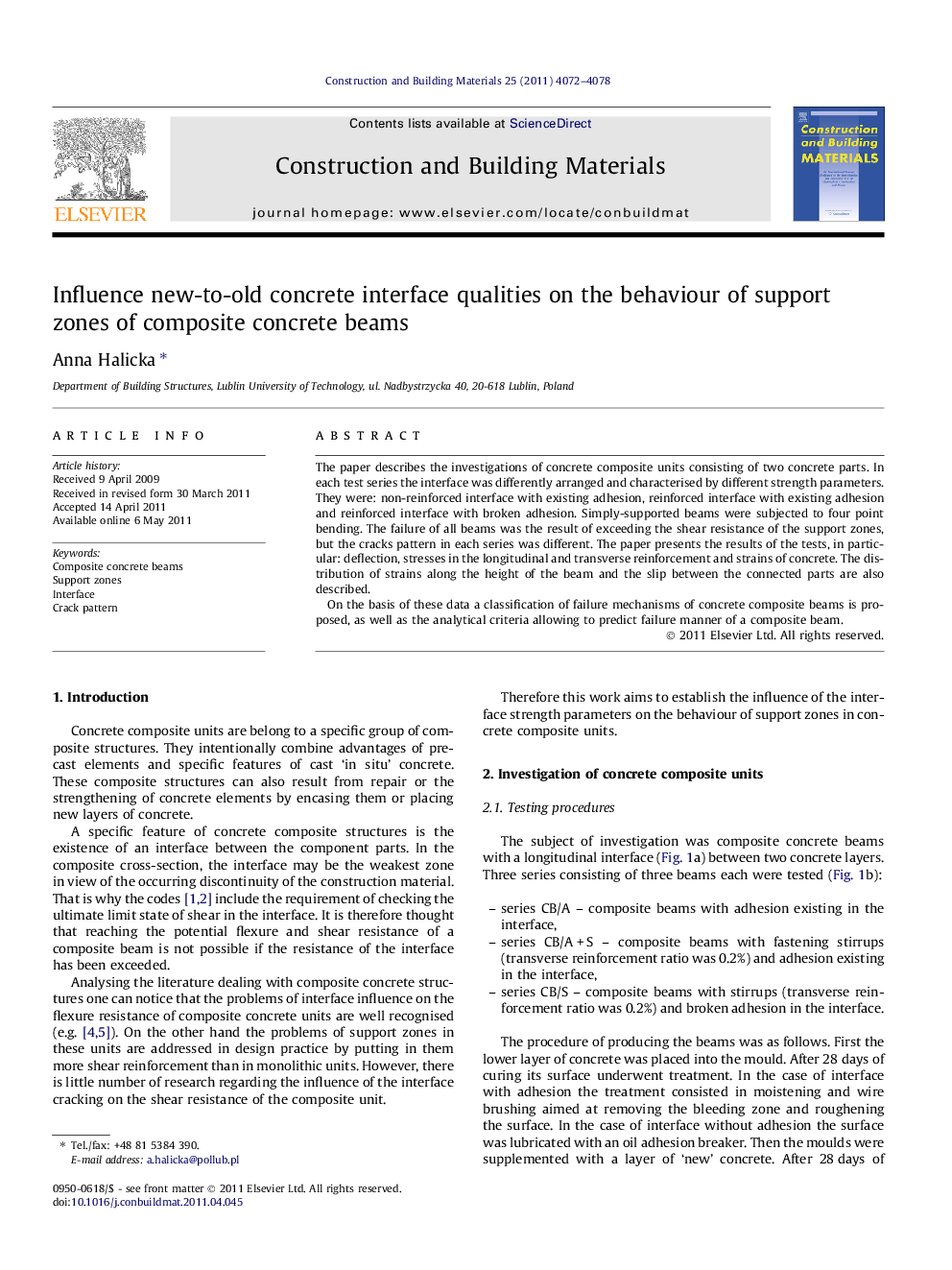| Article ID | Journal | Published Year | Pages | File Type |
|---|---|---|---|---|
| 259505 | Construction and Building Materials | 2011 | 7 Pages |
The paper describes the investigations of concrete composite units consisting of two concrete parts. In each test series the interface was differently arranged and characterised by different strength parameters. They were: non-reinforced interface with existing adhesion, reinforced interface with existing adhesion and reinforced interface with broken adhesion. Simply-supported beams were subjected to four point bending. The failure of all beams was the result of exceeding the shear resistance of the support zones, but the cracks pattern in each series was different. The paper presents the results of the tests, in particular: deflection, stresses in the longitudinal and transverse reinforcement and strains of concrete. The distribution of strains along the height of the beam and the slip between the connected parts are also described.On the basis of these data a classification of failure mechanisms of concrete composite beams is proposed, as well as the analytical criteria allowing to predict failure manner of a composite beam.
► I tested the composite concrete beams. ► I found that the manner of failure of these beams depended on the interface strength parameters. ► The dependence between the transverse force initiating the interface cracking and the force causing the diagonal crack is of fundamental importance. ► I proposed the design procedure allowing to foresee the manner of composite concrete beam failure.
